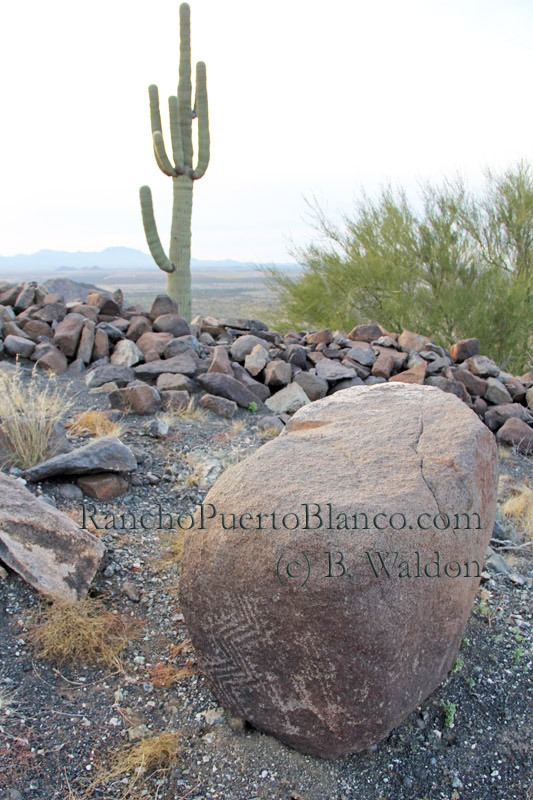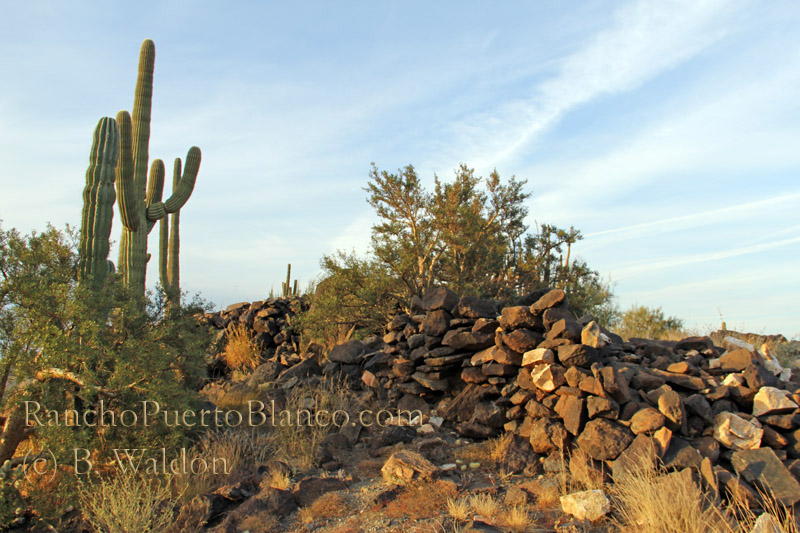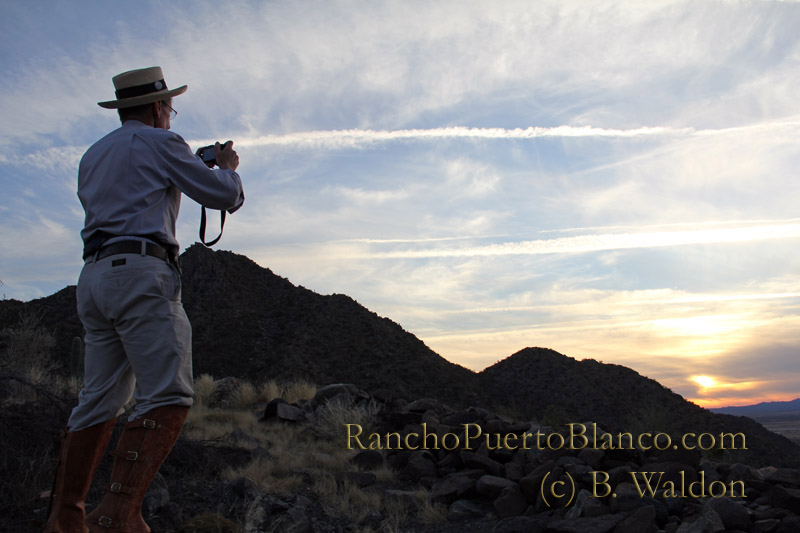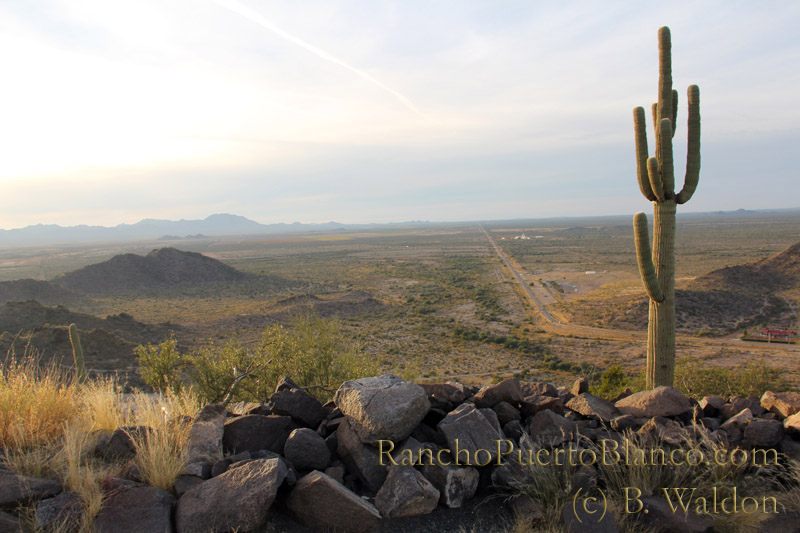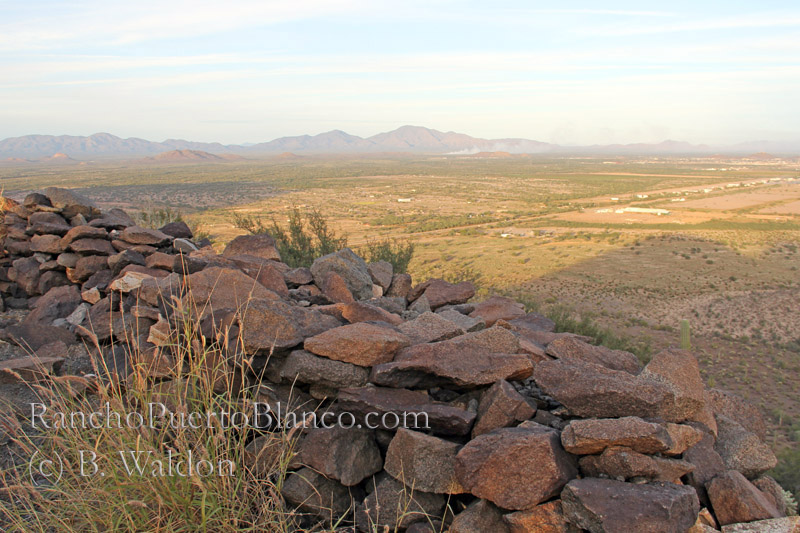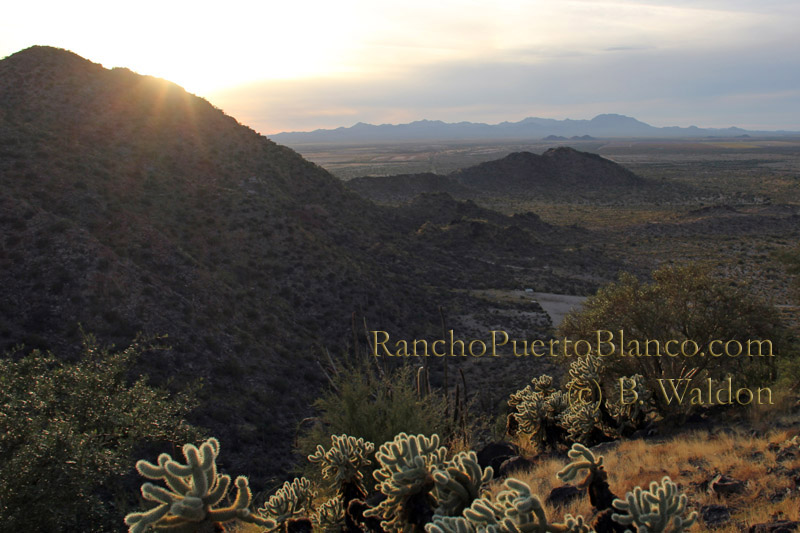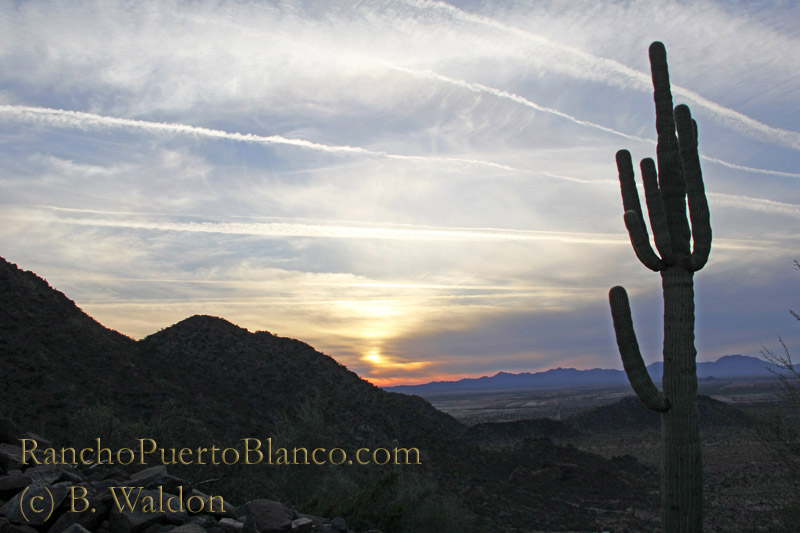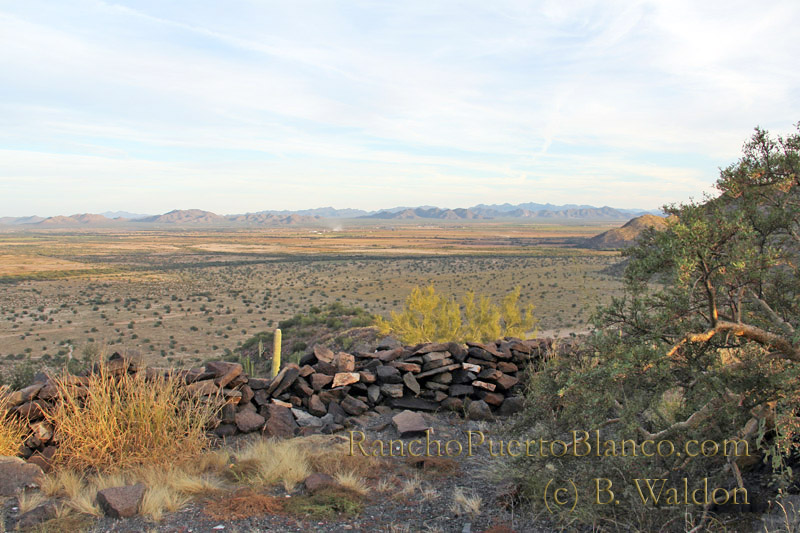
In December of 2014 I was fortunate to be at the ranch at the same time as a group of experienced rock-art researchers and experts from California. They spent several days exploring the petroglyphs of La Proveedora and San Jose Hill, and during our early conversations we had discussed the possibility of climbing to an ancient observatory that sits atop a hilltop not far from the ranch house.
Late one afternoon a member of the group, internationally renowned astronomer-archaeologist Dr. Edwin Krupp, and I decided to take a drive to the hill and see how easy it would be to climb. Getting started at 4:00 p.m. with the intent of getting to the top before the 5:30 p.m. sunset, we drove as close to the hill as the palo verde trees, creosote and desert scrub brush would allow, and then set off on foot through the desert until we were walking through loose rocks on an upward incline toward the top.
The hill is not that high and has minimal vegetation, but it has no established paths so we had to watch our footing as we ascended through loose rock and desert vegetation, traversing both at an angle and straight up toward the top. After about 30 minutes Dr. Krupp reached the top first, and announced that it was a ritual space. And as I got closer I saw the wall of rocks, four- to five-feet high, that encircled the flat area at the top of the hill.
As I climbed to the top, Dr. Krupp was busily surveying the area, taking photos and making calculations as he watched the descent of the sun nearing the horizon. I took photos of the sweeping vistas on the sides of the hill, from the ranchland and hills of the La Proveedora range to our south, the ranch house and corrals to the east, mountain ranges to the west, and state highway 37, which makes a dogleg turn near the northwestern foot of the hill, passing by a shrine to the Virgin of Guadalupe as it continues on a straight trajectory eastward to Caborca.
It occurred to me that the ancient ritual space where we were standing is in very close proximity to that modern-day ritual space, just across the highway below where we were standing. One sits atop a hill surrounded by rocks and the other, with dozens of steps on either side leading to its large image of the Virgin of Guadalupe painted on a rocky hillside surface, is a site that receives thousands of visitors every year on December 12, the feast day for the beloved patron saint of Mexico.
Both locations the sites of congregation, celebrations, dance, worship. With some differences in time, cultures and practices, but otherwise similar in purpose. And perhaps with a lineage connection that spans time between the ancient Hohokam people and local residents believed to be their modern-day descendants, namely the Pima and Tohono O’odham. So there we were, the internationally renowned expert in astronomy and archaeology, and me, someone who knows next to nothing about either subject, much less ancient timekeeping.
As Dr. Krupp continued to survey the area he was kind enough to explain some of the fundamental aspects of ancient rituals and calendaring. I learned that in addition to the person who was responsible for the rituals, each group of ancients had a “sun watcher,” a person responsible for keeping track of the position of the sun throughout the year. The sun watcher would notify the others, usually days in advance of significant annual events – solstices, the start of the rainy season – so they could prepare for festivals and other rituals.
The ancient calendar timekeeping at this location was based on the position of the setting and rising sun with respect to landmarks on the mountain ranges to the east and west. It was a somewhat hazy horizon that afternoon, and not quite at the winter solstice (still short by a few days). Despite this though, the sun was clearly descending on a notch formed by the visual intersection of two western mountains, the calendar marker for the winter solstice.
After the sun dipped below the horizon we scurried down the hill while we could still see our way in the fading light of the day, found our vehicle and made it back to the ranch house just after dark. The place is magical, the views breathtaking and the experience of visiting the area truly unique.
That evening I was filled with a sense of real satisfaction to have had the opportunity to learn about the history and practices of the ancient inhabitants of the region by visiting such a special place and having an expert instructor as a guide. I hope to return to the hilltop soon, perhaps to camp and observe the setting and rising sun during an equinox or solstice period.

